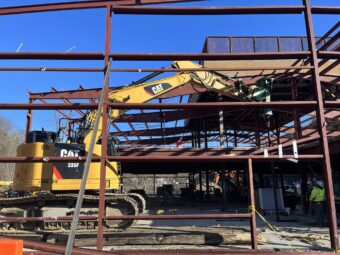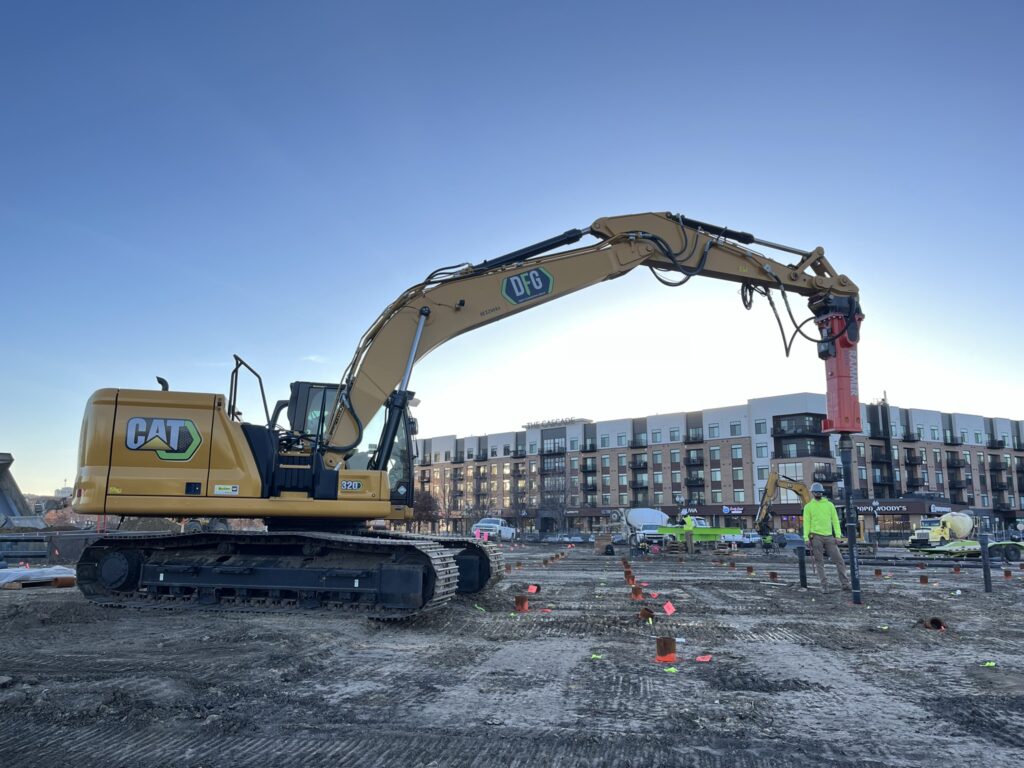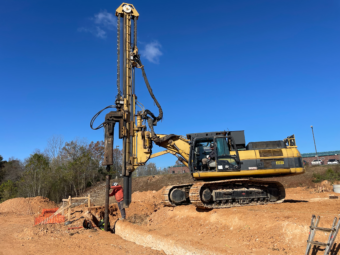Structural Design of Ductile Iron Piles in Compression
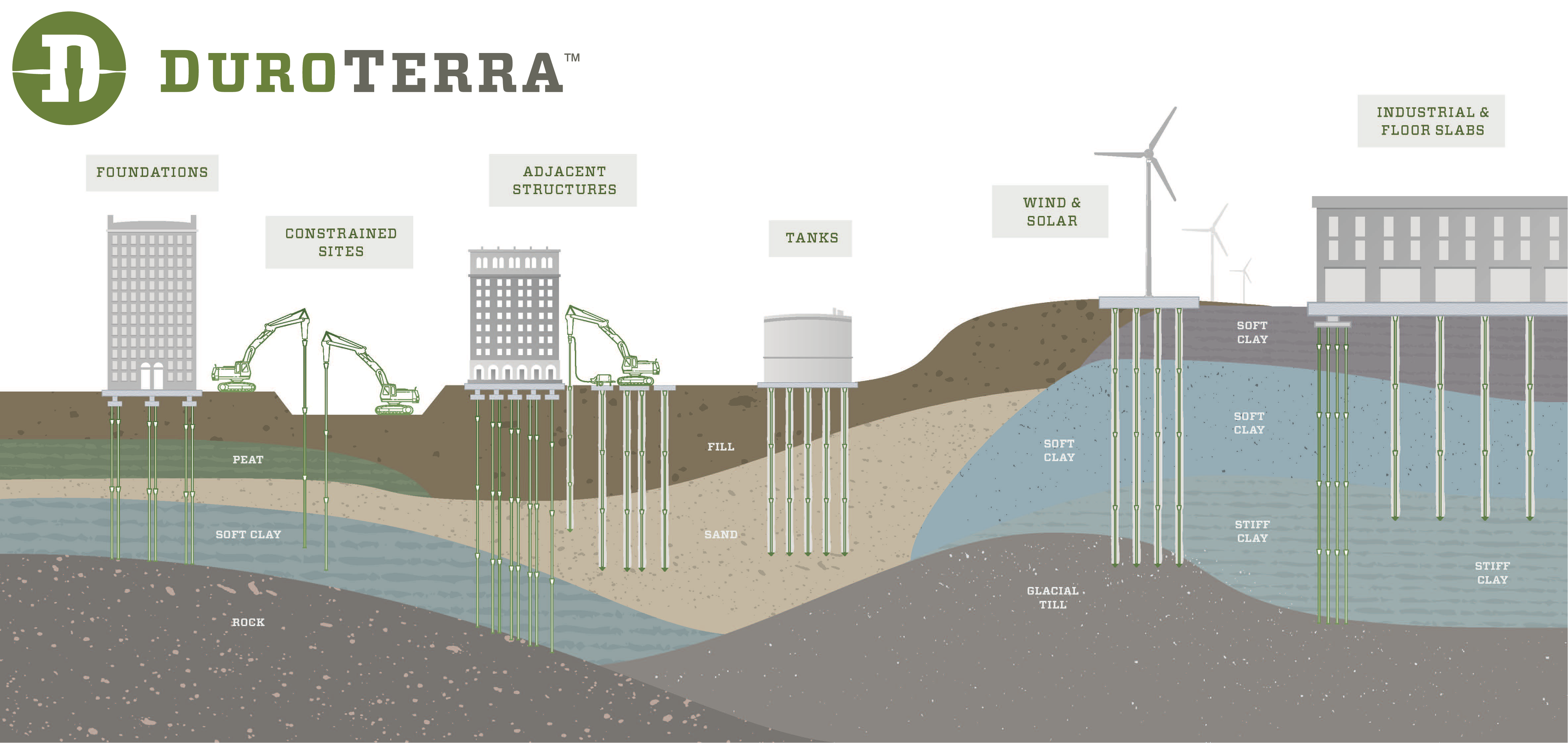
 Ductile Iron Piles have been used on a wide range of projects in the United States and around the world to support allowable axial compression loads ranging from 25 tons to more than 100 tons. Like traditional pile systems, the design capacity of Ductile Iron Piles in compression depends on characteristics of the selected pile materials and the prevailing geotechnical conditions. Design capacities are determined by 1) calculating the structural capacity of the pile material (typically using allowable stress design), 2) estimating the allowable geotechnical capacity (soil resistance) and 3) selecting the more critical design mechanism (i.e. smaller of these two values).
Ductile Iron Piles have been used on a wide range of projects in the United States and around the world to support allowable axial compression loads ranging from 25 tons to more than 100 tons. Like traditional pile systems, the design capacity of Ductile Iron Piles in compression depends on characteristics of the selected pile materials and the prevailing geotechnical conditions. Design capacities are determined by 1) calculating the structural capacity of the pile material (typically using allowable stress design), 2) estimating the allowable geotechnical capacity (soil resistance) and 3) selecting the more critical design mechanism (i.e. smaller of these two values).
In the U.S., structural design approaches for Ductile Iron Piles loaded in compression rely on technical resources from various industry publications including FHWA micropile design concepts as well as approaches included in national (i.e. IBC) and local building codes (i.e. IBC). To provide more background on structural design approaches, we created a Tech Brief that highlights the typical Ductile Iron Pile structural design approach using allowable stress design to evaluate the working compression capacity of the pile. Example calculations are also included. The Tech Brief, along with other technical and project resources, are available for download here. Look for more information on technical and design approaches coming in future DuroTerra Dialogues.
PROJECT EXPERIENCE – MATSON MILL
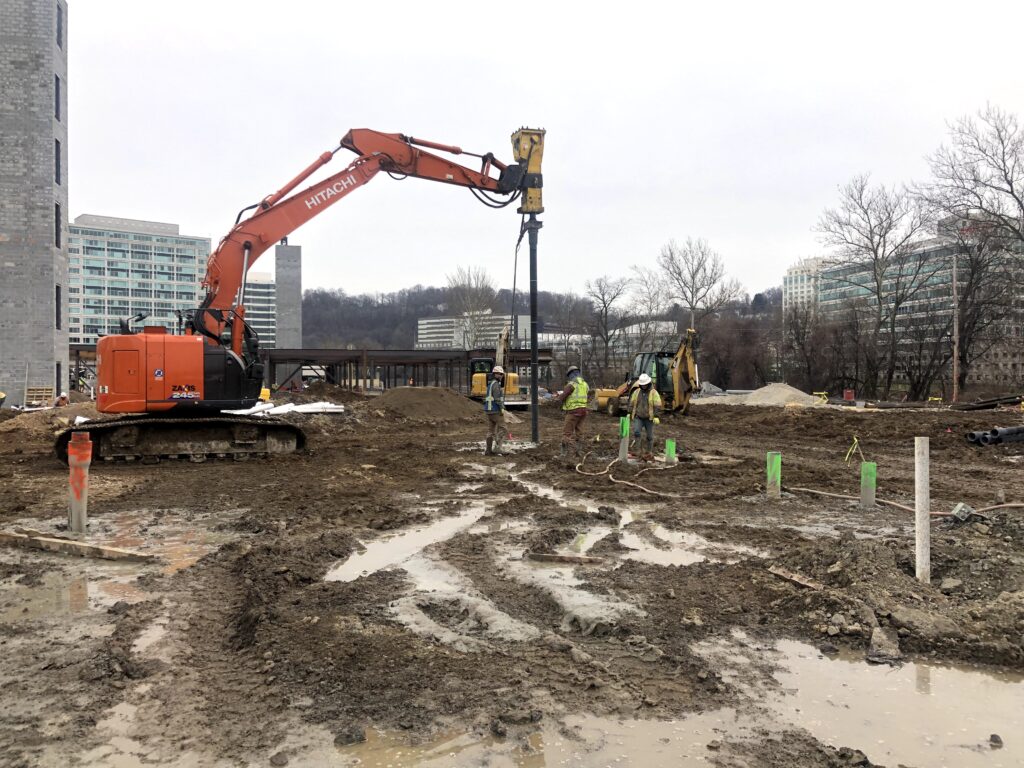
The Matson Mills project in Conshohocken, PA included a five-story, 318,000 square foot multi-family condominium building. The structure consisted of a structural steel podium with wood framing above. The site was located near the Schuylkill River and included an historic fill ranging in depth from 8 to 23 feet. The fill included a mixed soil matrix along with construction debris, rock, buried slabs, cinders and remnant rail structures from the site’s previous use. Below the fill, residual silt and clay soils were encountered above rock that was expected to range from 18 to 33 feet below grade.
The project was designed for support of shallow foundations using a rigid inclusion ground improvement system. During installation, it was discovered that the weathered rock surface extended much deeper, up to 65 feet in some areas. With limitations on the treatment depth of the ground improvement equipment, an alternative approach was needed to keep the project schedule on track.
Based on previous experience on other sites with variable rock conditions, GeoStructures, Inc. proposed an exterior grouted Ductile Iron Pile system. With only a few days for lead time, Ductile Iron Piles could be delivered to the site and installed with equipment already mobilized to the site. The Plug and Drive connection allowed the DIPs to be driven to variable depths to terminate on rock and easily address the site variability without material waste. Since the project was already designed for rigid inclusion support, the Ductile Iron Pile solution incorporated oversized bearing plates and an engineered granular pad to provide compatibility with the rigid inclusion design.
GeoStructures installed Series 170/9.0 Ductile Iron Piles with a 270 mm grout shoe using an exterior grouted installation method to replicate the rigid inclusions. All piles were driven to achieve “set” on the rock at depths ranging from 35 to 65 feet. Piles were designed for 150 kip working capacity. Load tests were performed to 200% of the design load and showed only 0.12 inches of movement at the design load. In all, the installations and testing required only 10 working days to complete. For more information on this and other projects, check out our projects page at duroterra.com/projects.



